Being able to successfully bring a pulseless individual back to life is one of the more rewarding aspects of healthcare. Cardiopulmonary resuscitation (CPR) has long been the gold standard for initial treatment of cardiac arrest. The origins of CPR date back to 1740 France, when the Paris Academy of Sciences recommended mouth-to-mouth resuscitation for drowning victims. The first documented chest compressions were performed by Dr. Friedrich Maass in 1891. The 1960s brought us the basic concepts of CPR as we know them today. Since the first guidelines were published in 1966 by the European Resuscitation Council (EHR) and American Heart Association (AHA), the guidelines have been reviewed and updated with evidence-based information every 5 years.
This article provides a brief overview of the 2015 Guidelines. More information on the 2015 CPR Guidelines can be found at http://circ.ahajournals.org/content/132/18_suppl_2.toc
How the guidelines were updated
The most recent update was published October 15, 2015, and represents the work of experts in resuscitation from 39 countries. When new scientific evidence was available or disagreement was noted in treatment protocols, topics were prioritized for review. After topics were selected for the 2015 update, two additional steps were incorporated into the review process.
First, to systematically review and evaluate the evidence, the Grading of Recommendations, Assessment, Development, and Evaluation (GRADE) system was used to facilitate evaluation of evidence quality and strength of the recommendations. (Additional information on the GRADE System can be found http://www.gradeworkinggroup.org/)
Second, the AHA developed a Web-based Systematic Evidence Evaluation and Review System (SEERS) to expedite the evaluation process and allow for continuous updates to the CPR guidelines. Clinicians can monitor the SEERS website to remain current with the latest resuscitation science and the evaluation of evidence.
Ethics update
The practice of CPR continues to offer us many ethical challenges. When providing resuscitation, healthcare providers are faced with challenging situations, such as the decision to terminate or withhold CPR. Ethics regarding CPR are varied and complex depending on the provider’s expertise, setting (in or out of the hospital), and patient (adult, pediatric, or neonate). Here is a summary of some of the key ethics updates.
Extracorporeal CPR
One ethical issue is extracorporeal CPR (ECPR), which involves initiation of circulatory flow and oxygenation via cannulation of the femoral artery and vein. This treatment modality requires specialized equipment, a highly trained team, and a hospital setting. The primary objective of ECPR is to support the patient while evaluating and treating potentially reversible causes of the arrest. The ethical decision involves a specific subset of patients, and the patient’s pre-arrest status and potential post-arrest quality of life.
Organ transplantation
Another ongoing ethical issue is organ transplantation. The 2015 Guidelines address organ donation and suitability of organs. They state that patients who are resuscitated after cardiopulmonary arrest and then expire or progress to brain death should be evaluated for suitability for organ donation. In facilities where prompt organ donation can be facilitated, those patients who fail to achieve return of spontaneous circulation (ROSC) and would have resuscitation efforts terminated may be considered as possible liver or kidney donors. Studies of organs transplanted from patients’ whose brain death occurred as a result of cardiac arrest find comparable success rates when compared with similarly matched donors.
Termination of care after resuscitation
Poor neurological outcome can be a consequence of cardiac arrest. Making the decision to terminate aggressive care in the postcardiac arrest patient has strong ethical implications. In the comatose patient, determination of neurological outcomes can be assessed by several different methods including physical assessment, biomarkers, imaging studies, and electrophysiologic testing.
When targeted temperature management (TTM) is used after cardiac arrest, the residual effects of sedatives or paralytics may confound clinical evaluation of neurological assessment. Based on recent evidence, the 2015 Guidelines recommend that determination of poor neurological outcome should not be undertaken until 72 hours after return to normothermia.
Termination of CPR
Prolonged resuscitation efforts bring their own variety of ethical dilemmas, such as when to terminate CPR. End tidal CO2 (ETCO2) monitoring can provide rescuers with information on ventilation and perfusion. Although it’s useful for monitoring effectiveness or failure during resuscitation, available evidence doesn’t indicate ETCO2 is effective alone in determining when to terminate resuscitation, especially in intubated patients.
The 2015 Guidelines recommend that with an intubated patient, if 20 minutes of CPR does not achieve an ETCO2 reading of 10 mm Hg, additional prognostication factors can be used to determine when resuscitation efforts should be terminated. One recent systematic review of ETCO2 values associated with ROSC indicated the average ETCO2 needed for ROSC was 25 mm Hg, which is higher than previously believed. Additional research is needed to determine the appropriate targets for ETCO2 to decrease morbidity and mortality.
What’s new to ensure high-quality CPR?
According to the AHA, half of all out-of-hospital cardiac arrests are unwitnessed, and only 11% of these patients survive to discharge. Of in-hospital cardiac arrest patients, fewer than one-fourth survive to discharge. Basic Life Support (BLS) has been proven to be the first-line intervention in all forms of cardiac arrest. Primary components of BLS include rapid identification of cardiac arrest, activation of the emergency response system, early high-quality CPR, and rapid defibrillation.
The 2015 Guidelines recommend that rescuers assume an unresponsive victim is in cardiac arrest if he or she is not breathing or exhibits agonal gasps. Dispatchers should instruct untrained lay rescuers to provide compressions-only CPR. Using scripted protocols also is recommended for emergency dispatchers to aid them in recognizing cardiac arrest.
In 2015, the BLS sequence was updated with considerations specific to the rescuer’s ability and training. The guidelines also consider the widespread availability of mobile telephones and incorporate using speakerphone mode to allow dispatchers to provide instructions to rescuers without interrupting CPR. The BLS sequence changes are outlined in BLS sequence based on rescuer ability and training.
BLS sequence based on rescuer ability and trainingAll rescuers should first ensure the scene is safe, shout or call for help from nearby persons, and activate the emergency management system.
|
Here is a closer look at some key recommendations.
Compressions
The 2015 Guidelines make important points about compression rate, chest recoil, and minimizing interruptions.
Compression rate. In 2010, CPR compression rate was recommended to be at least 100 times per minute. Since that time, several observational studies examined compression rate in relation to ROSC, survival rates, blood pressure, and end-tidal CO2. Results showed that rates of 100 to 120 were associated with increased survival, and the 2015 Guidelines recommend that compression rates be consistent with the research.
The 2010 Guidelines recommended that compression depth be 2″ for adults. Consistent research evidence, including one study that examined over 9,000 patients, indicated optimal survival rates with compression depths of 1.6″ to 2.2″. The 2015 Guidelines recommend that compression depth be at least 2″ for adult CPR.
Chest recoil. During chest compressions, chest recoil creates negative intrathoracic pressure, allowing venous return to the heart. To date, there have been no adult human studies examining chest recoil and patient outcomes after CPR. During prolonged periods of vigorous CPR, fatigue can cause rescuers to lean during upstroke, which can impede full chest recoil. The 2015 Guidelines recommend that rescuers avoid leaning on the chest to allow full recoil.
Minimizing interruptions. Minimizing interruptions in chest compressions has been associated with better patient outcomes, according to both observational studies and randomized control trials. Consequently, the 2015 Guidelines recommend rhythm and pulse checks be performed as quickly as possible. In patients without an advanced airway placed, rescue breaths should be delivered in less than 10 seconds.
Defibrillation
Several research studies (both observational and randomized clinical trials) and meta-analyses report no difference in survival rates in performing CPR for as long as 3 minutes before defibrillation compared to delaying CPR until after the first defibrillation.
In patients with unwitnessed arrest who have either ventricular fibrillation (VF) or pulseless ventricular tachycardia (VT) as the first identifiable rhythm, studies show no survival benefit from performing CPR before delivering the first shock, if a defibrillator was readily available.
The 2015 Guidelines recommend that it is reasonable to shock as soon as possible in a witnessed arrest with an available defibrillator, and to provide CPR until ready to shock in unwitnessed arrest.
Observational and randomized clinical trial research studies have demonstrated that there is no increase in survival rates associated with checking rhythm after shock. Therefore, the 2015 Guidelines recommend that CPR be immediately resumed after each shock.
Airway
In managing the airway during CPR, the head-tilt-chin-lift or jaw-thrust methods are still recommended. For patients with an advanced airway, breaths can be delivered once every 6 seconds without interrupting chest compressions. For patients without an advanced airway, the 2015 Guidelines recommend a 30:2 compression/breath ratio.
Additional recommendations
Clinicians need to be aware of two other recommendations:
- To reduce harm due to suspected spinal injury with only lay rescuers present, one rescuer should immobilize the head with one hand on either side, rather than using an immobilizing device.
- If the unresponsive victim has a pulse but is not breathing or exhibiting agonal gasps, naloxone should be administered if an opiate overdose is suspected, in addition to providing rescue breaths.
The following 2010 recommendations were not reviewed in 2015 and remain the same:
- Pulse check—no more than 10 seconds to perform initial pulse check
- Chest compressions—all patients in cardiac arrest should receive compressions
- Rescue breaths—delivered over 1 second with enough volume to make the chest rise
- Early defibrillation—if two or more rescuers present, one should obtain AED while one starts CPR
Ancillary devices and alternative techniques for conventional CPR
Conventional CPR consists of manual compressions and intermittent rescue breaths. Over the years, various devices have been developed to enhance perfusion during resuscitation. Here is a summary of the evidence and 2015 Guideline recommendations for some of these devices, which require clinician education before use.
Impedance threshold devices
Impedance threshold devices (ITD) are designed to prevent air from passively entering the lungs during the decompression phase of CPR. The goal of ITD use is to enhance venous return to the heart, which in turn allows more blood to be pumped during the compression phase. ITDs are designed to be used with either a bag-valve-mask device, or with an endotracheal tube. The ITD must be removed when ROSC is achieved, so the patient can breathe without resistance.
Evidence: Results of randomized clinical trials indicate no increased benefit or harm to patients when ITDs are used.
Recommendation: The guidelines do not recommend routine use of ITDs during CPR.
Active compression-decompression devices
Active compression-decompression devices are hand held and use a suction cup applied to the midsternal area. This device compresses the chest at a consistent depth and rate, and actively lifts the chest during decompression. The aim is to increase negative intrathoracic pressure to enhance venous return.
Evidence: Four randomized clinical trials comparing active compression-decompression devices with ITDs to conventional CPR found no significant difference in survival.
Recommendations: The guidelines do not recommend routine use of active compression-decompression devices. However, these devices may be used as an alternative to manual compressions when staff have been trained and the equipment is readily available.
Mechanical compression devices
The goals of these mechanical compression devices are to provide consistency in compressions, alleviate rescuer fatigue, and allow the rescuer to provide additional care to the patient during resuscitation.
Two available types of mechanical compression devices, both powered by gas or electricity, are available on the market today. One uses a piston, and the other a load-distributing band. The piston device compresses the chest at a consistent rate and depth, and some models incorporate suction to assist in chest recoil. The load-distributing band device use a constricting band and backboard to provide chest compressions. Both devices require readily available specialized equipment and properly trained staff to be effective.
Evidence: According to randomized clinical trials and case studies conducted since the 2010 Guidelines were published, no increased harm or benefit was demonstrated by either type of mechanical compression device.
Recommendations: The 2015 Guidelines do not recommend routine use of mechanical compression devices, but state they may be considered an appropriate alternative in specific settings where manual compressions may be difficult or dangerous to provide (for example, cardiac catheterization lab, in a moving ambulance, limited rescuers with prolonged resuscitation).
Extracorporeal cardiopulmonary bypass
The last alternative measure discussed in the 2015 Guidelines is ECPR, which is initiation of cardiopulmonary bypass during cardiac arrest. The aim of this technique is to support and restore circulation while addressing reversible conditions that may have caused the arrest. ECPR requires highly specialized staff and equipment, which is not available in all settings.
Evidence: There have been no known randomized clinical trials on this technique, but one prospective observational cohort of 162 out-of-hospital cardiac arrest patients indicated an increased rate of neurologically intact survival at 3 months. Another similar study with 454 patients reported increased neurologically intact survival at 6 months.
Recommendations: The 2015 Guidelines noted there is insufficient evidence for recommending routine use. However, ECPR may be an alternative for a select group of patients with a reversible cause, provided it can be rapidly implemented and used for a limited time period.
After circulation returns…
Even though cardiac arrest can be due to a variety of causes, hypoxia, ischemia, and reperfusion can affect multiple organ systems. Maintaining organ function is vitally important in ensuring optimal outcomes for the patient, and includes managing temperature and blood pressure, and obtaining a 12-lead electrocardiogram (ECG).
Temperature
Since the 2010 Guidelines were published, several research studies have examined the neuroprotective effects of targeted temperature management (TTM). Evidence has demonstrated increased neurologically intact survival rates in patients with temperatures maintained between 89.6° and 96.8° F (32° and 36° C) for a period of 24 hours.
The Guidelines recommend TTM for all comatose adults with ROSC after cardiac arrest. In addition, providers should avoid hyperthermia during and after the rewarming period, as hyperthermia was associated with poor outcomes in two research studies.
Blood pressure
Recent evidence indicates that hypotension (systolic blood pressure below 90 mm Hg or mean arterial pressure below 65 mm Hg) after cardiac arrest in the post-resuscitation period was associated with increased mortality and decreased functional outcome. Most patients are hemodynamically unstable post-arrest, and can be difficult to stabilize, depending on the cause of the arrest. According to systematic reviews, there is no magic blood pressure value that will provide the best outcome because blood pressure varies widely between patients.
Based on the evidence, the 2015 Guidelines recommend maintaining hemodynamic variables at values similar to any other adult who is critically ill, while avoiding and promptly treating hypotension.
12-lead electrocardiogram
Once ROSC occurs, a 12-lead ECG should be obtained to check for ST segment elevation. Based on results of many observational studies, outcomes and survival are improved when emergent coronary angiography is performed on patients suspected of suffering a cardiac-caused arrest. Data has shown that 96% of post-arrest patients with ST segment elevation had lesions that were able to be treated emergently in the cardiac catheterization lab.
Based on this information, the 2015 Guidelines recommend emergent coronary angiography for post-arrest patients whose arrest has a suspected cardiac cause.
Benefits for patients
In summary, the 2015 CPR Guidelines contain a wealth of new, evidence-based information regarding cardiac arrest patients. By understanding and implementing the guidelines, we can provide the best care and ensure the best outcomes for our patients.
Selected references
Aufderheide TP, Nichol G, Rea TD, et al; Resuscitation outcome consortium investigators. A trial of an impedance threshold device in out-of-hospital cardiac arrest. N Eng J Med. 2011;365(9):798-806.
Brooks SC, Anderson ML, Bruder E, et al. Part 6:Alternative techniques and ancillary devices for cardiopulmonary resuscitation: 2015 American Heart Association Guidelines Update for Cardiopulmonary Resuscitation and Emergency Cardiovascular Care. Circulation. 2015;132(18 Suppl 2):S436-43.
Callaway C, Donnino M, Fink EL, et al. Part 8: Post-Cardiac Arrest Care: 2015 American Heart Association Guidelines Update for Cardiopulmonary Resuscitation and Emergency Cardiovascular Care. Circulation. 2015;132(18 Suppl 2):S465-82.
Frascone RJ, Wayne MA, Swor RA, et al. Treatment of non-traumatic out-of-hospital cardiac arrest with active compression decompression cardiopulmonary resuscitation plus an impedance threshold device. Resuscitation. 2013;84(9):1214-22.
Idris AH, Guffey D, Pepe PE, et al. Chest compression rates and survival following out-of-hospital cardiac arrest. Crit Care Med. 2015;43(4):840-8.
Kleinman ME, Brennan EE, Goldberger ZD, et al. Part 5: Adult basic life support and cardiopulmonary resuscitation quality: 2015 American Heart Association Guidelines Update for Cardiopulmonary Resuscitation and Emergency Cardiovascular Care. Circulation. 2015;132(18 Suppl 2):S414-35.
Maekawa K, Tanno K, Hase M, et al. Extracorporeal cardiopulmonary resuscitation for patients with out-of-hospital cardiac arrest of cardiac origin: a propensity-matched study and predictor analysis. Crit Care Med. 2013;41(5):1186-96.
Mancini M, Diekema D, Hoadley TA, et al. Part 3: Ethical issues: 2015 American Heart Association Guidelines Update for Cardiopulmonary Resuscitation and Emergency Cardiovascular Care. Circulation. 2015;132(18 Suppl 2):S383-96.
Neumar RW, Shuster M, Callaway CW, et al. Executive Summary: 2015 American Heart Association Guidelines Update for Cardiopulmonary Resuscitation and Emergency Cardiovascular Care. Circulation. 2015;132(18 Suppl 2):S315-67.
Perkins GD, Lall R, Quinn T, et al. Mechanical versus manual chest compression for out-of-hospital cardiac arrest (PARAMEDIC): A pragmatic, cluster randomized controlled trial. Lancet. 2014;385(9972):947-55.
Sakamoto T, Morimura N, Nagao K et al; SAVE-J Study Group. Extracorporeal cardiopulmonary resuscitation versus conventional cardiopulmonary resuscitation in adults with out-of-hospital cardiac arrest: a prospective observational study. Resuscitation. 2014;85(6):762-8.
Scolletta S, Donadello K, Santonocito C, et al. Biomarkers as predictors of outcome after cardiac arrest. Expert Rev Clin Pharmacol. 2012;5(6):687-99.
Wik L, Olsen JA, Persse D, et al. Manual vs. integrated automatic load-distributing band CPR with equal survival after out of hospital cardiac arrest. The randomized CIRC trial. Resuscitation. 2014;85(6):741-8.
Pamela Anderson is a nurse practitioner for the peripheral vascular surgeons of St. Vincent Medical Group in Indianapolis, Indiana. Terri Townsend is a cardiovascular services staff educator for Community Hospital Anderson in Anderson, Indiana.





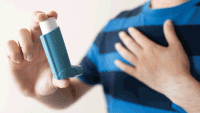


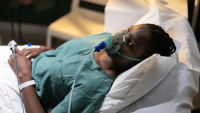
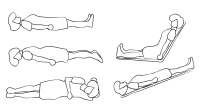
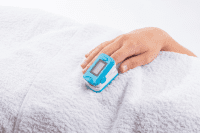


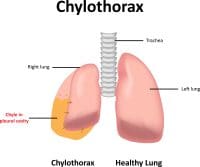


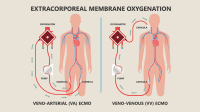


1 Comment.
Wow, I had no idea that the CPR guidelines are reevaluated every five years. When we learned the basics, back when I was in girl scouts, I just assumed they were the same as they had been since they were created. It is really interesting to learn about the most recent updates from 2015. I wonder how hard it would be to find professional CPR training. I’m sure it would look good on my resume.